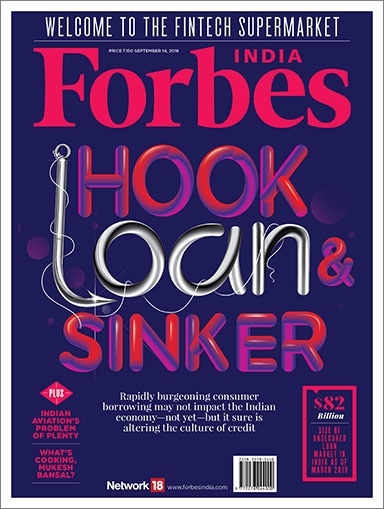
The borrowed plumes of lending booms
There are long-term worries of a surge in loan defaults if jobs shrink or stagnate

Popular perception—which Hollywood flicks like Confessions of a Shopaholic may have done their bit to reinforce—suggests that it’s binge-shopping on the Pradas and the Pomellatos that drives people to bankruptcy. Maybe it does. But you know who are more likely to become insolvent? Those with little to go around and who struggle to bring home the bare necessities.
The Americans coined a nice-sounding phrase to describe people who live on the frayed edges of a lopsided society: Subprime, or typically those with a poor credit history. Now why would you want to chase somebody with a poor credit score? Elementary: You can slap on them usurious interest rates and, if they don’t pay up, pursue them with cold-hearted zeal.

For instance, as Samar Srivastava writes in this fortnight’s cover story, Hook, Loan & Sinker, the evocatively branded earlysalary.com is wooing salaried millennials with the carrot of half a month’s salary in advance. It’s a vicious cycle, with the employee more likely than not to be without a bean before the end of every other month. Although the startup claims a default rate of just 1 percent, the long-term worry is a potential surge in defaulting wage-earners if jobs shrink or stagnate.
As Srivastava writes, the recent past has seen an explosion in personal loans. Economists worry that this boom is leading to a decline in household savings, the biggest source of funding for the Indian economy. As for defaults, they’re manageable for now, and the good news is that, unlike in the West, credit card usage is relatively subdued. What’s more, credit bureaus have created robust-enough processes that determine the debt-worthiness of potential borrowers. The danger, of course, lies in lenders who will ignore such information or go out on a limb to woo consumers with low scores.
If borrowers are at risk, so are a rash of new-age lenders who are falling over each other with mouth-watering loans. They differ from traditional lenders in that they use technology to ease the process of bagging a loan.
Most of these financial technology, or fintech, companies began as digital payment startups, but the sea of red ink on their books suggests that competing with cash, and credit and debit cards can’t be the end game. So what’s the next gambit after payments? As Forbes India’s Sayan Chakraborty writes, these fintech ventures may not have profits to show but what they do have in heaps is data. Mapping earning and spending patterns of consumers enables to spread their wings into a gamut of financial services.
The lending shops constitute only one of the floors of the multistoreyed financial supermarket. There’s plenty more in there—from investing products to new-age insurance possibilities—as Salil Panchal, who along with a team of Forbes India writers produced this fortnight’s fintech package, will tell you.
Best,
Brian Carvalho
Editor, Forbes India
Email:Brian.Carvalho@nw18.com
Twitter id:@Brianc_Ed
(This story appears in the 14 September, 2018 issue of Forbes India. To visit our Archives, click here.)
X















